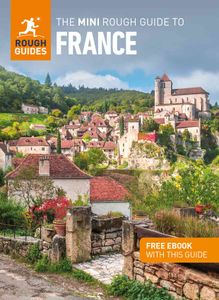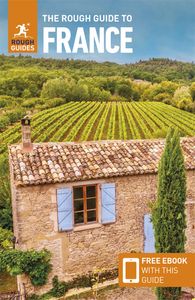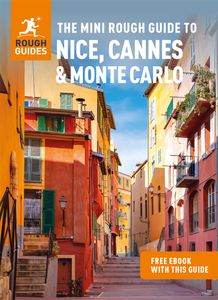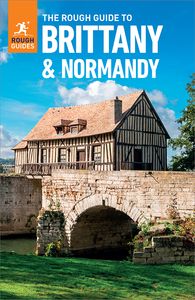Canoeing on the Dordogne and Vézère
Canoeing is hugely popular in the Dordogne, especially in summer, when the Vézère and Dordogne rivers are shallow and slow-flowing – ideal for beginners. There are rental outlets at just about every twist in both rivers. Although it’s possible to rent one-person kayaks or two-person canoes by the hour, it’s best to take at least a half-day or longer (some outfits offer up to a week’s rental), and simply cruise downstream. The company you book through will either take you to your departure point or send a minibus to pick you up from your final destination. Prices vary according to what’s on offer; expect to pay around €17–25 per person per day. Most places function daily in July and August, on demand in May, June and September, depending on the weather, and are closed the rest of the year. All companies must provide life jackets (gilets) and teach you basic safety procedures, most importantly how to capsize and get out safely. You must be able to swim.
Périgord Noir
Périgord Noir encompasses the central part of the valley of the Dordogne, and the valley of the Vézère. This is the distinctive Dordogne country: deep-cut valleys between limestone cliffs, with fields of maize in the alluvial bottoms and dense oak woods on the heights, interspersed with patches of not very fertile farmland. Plantations of walnut trees (cultivated for their oil), flocks of low-slung grey geese (their livers enlarged for foie gras) and prehistoric-looking stone huts called bories are all hallmarks of Périgord Noir.
The well-preserved medieval architecture of Sarlat, the wealth of prehistory and the staggering cave paintings of the Vézère valley, and the stunning beauty of the château-studded Dordogne have all contributed to making this one of the most heavily touristed inland areas of France. If possible, it’s worth coming out of season, but if you can’t, seek accommodation away from the main centres, and always drive along the back roads – the smaller the better – even when there is a more direct route available.
Grotte des Combarelles
The
Grotte des Combarelles was discovered in 1910. The innermost part of the cave is covered with
engravings from the Magdalenian period (about 12,000 years ago). Drawn over a period of two thousand years, many are superimposed one upon another, and include horses, reindeer, mammoths and stylized human figures – among the finest are the heads of a horse and a lioness.
Abbaye de Cadouin
For eight hundred years, until 1935, the twelfth-century Cistercian
Abbaye de Cadouin drew flocks of pilgrims to wonder at a piece of cloth first mentioned by Simon de Montfort in 1214 and thought to be part of Christ’s shroud. In 1935 the two bands of embroidery at either end were shown to contain an Arabic text from around the eleventh century. Since then the main attraction has been the finely sculpted but badly damaged capitals of the Flamboyant Gothic
cloister. Beside it stands a Romanesque
church with a stark, bold front and wooden belfry roofed with chestnut shingles (chestnut trees abound around here – their timber was used in furniture-making and their nuts ground for flour during frequent famines). Inside the church, the nave is slightly out of alignment; this is thought to be deliberate and perhaps a vestige of pagan attachments, as the three windows are aligned so that at the winter and summer solstices the sun shines through all three in a single shaft.
Abri du Cap Blanc
Not a cave but a natural rock shelter, the Abri du Cap Blanc lies on a steep wooded hillside. The shelter contains a sculpted frieze of horses and bison dating from the Middle Magdalenian period, about 14,000 years ago. Of only ten surviving prehistoric sculptures in France, this is undoubtedly the best. The design is deliberate, with the sculptures polished and set off against a pockmarked background. But what makes this place extraordinary is not just the large scale, but the high relief of some of the sculptures. This was only possible in places where light reached in, which in turn brought the danger of destruction by exposure to the air. Cro-Magnon people actually lived in this shelter, and a female skeleton some two thousand years younger than the frieze was found here.
Beaulieu-sur-Dordogne
In a picturesque spot on the banks of the Dordogne, Beaulieu-sur-Dordogne boasts an appealing and atmospheric old town that is particularly pleasant to explore in late afternoon when the pale-stone buildings glow in the setting sun. Beaulieu is especially known for being home to one of the great masterpieces of Romanesque sculpture, on the porch of the church of St-Pierre. This doorway is unusually deep-set, with a tympanum presided over by an oriental-looking Christ with one arm extended to welcome the chosen. All around him is a complicated pattern of angels and apostles, executed in characteristic “dancing” style, similar to that at Carennac. The dead raise the lids of their coffins hopefully, while underneath a frieze depicts monsters crunching heads. Take the opportunity also to wander north along rue de la Chapelle past some handsome sculpted facades and down to the river.
Beynac-et-Cazenac
Clearly visible on an impregnable cliff on the north bank of the river, the eye-catching village and castle of Beynac-et-Cazenac was built in the days when the river was the only route open to traders and invaders. By road, it’s 3km to the château but a steep lane leads up through the village and takes only fifteen minutes by foot. It’s protected on the landward side by a double wall; elsewhere the sheer drop of almost 200m does the job. The flat terrace at the base of the keep, which was added by the English, conceals the remains of the houses where the beleaguered villagers lived. Richard the Lionheart held the place for a time, until a gangrenous wound received while besieging the castle of Châlus, north of Périgueux, ended his term of blood-letting.
Château de Castelnaud
The partially ruined Château de Castelnaud is a true rival to Beynac in terms of impregnability – although it was successfully captured by the bellicose Simon de Montfort as early as 1214. The English held it for much of the Hundred Years’ War, and it wasn’t until the Revolution that it was finally abandoned. Fairly heavily restored in recent years, it now houses a highly informative museum of medieval warfare. Its core is an extensive collection of original weaponry, including all sorts of bizarre contraptions, and a fine assortment of armour.
Grotte de Font-de-Gaume
Since its discovery in 1901, dozens of polychrome paintings have been found in the Grotte de Font-de-Gaume. The cave was first settled by Stone Age people during the last Ice Age – about 25,000 BC – when the Dordogne was the domain of roaming bison, reindeer and mammoths. The entrance is no more than a fissure concealed by rocks and trees above a small lush valley, leading to a narrow twisting passage. The first painting you see is a frieze of bison, reddish-brown in colour, massive, full of movement and very far from the primitive representations you might expect. Further on comes the most miraculous image of all, a frieze of five bison discovered in 1966 during cleaning operations. The colour, remarkably sharp and vivid, is preserved by a protective layer of calcite. Shading under the belly and down the thighs is used to give three-dimensionality with a sophistication that seems utterly modern. Another panel consists of superimposed drawings, a fairly common phenomenon in cave painting, sometimes the result of work by successive generations, but here an obviously deliberate technique. A reindeer in the foreground shares legs with a large bison behind to indicate perspective.
Stocks of artists’ materials have also been found here: kilos of prepared pigments; palettes – stones stained with ground-up earth pigments; and wooden painting sticks. Painting was clearly a specialized, perhaps professional, business, reproduced in dozens of caves located in the central Pyrenees and northern Spain.
Grotte de Lascaux and Lascaux IV
The small, attractive town of Montignac is the main base for visiting the Grotte de Lascaux, which was discovered in 1940 by four boys who stumbled across a deep cavern decorated with marvellously preserved paintings of animals. Executed by Cro-Magnon people 17,000 years ago, the paintings are among the finest examples of prehistoric art in existence. There are five or six identifiable styles, and subjects include bison, mammoths and horses, plus the biggest known prehistoric drawing, of a 5.5m bull with an astonishingly expressive head and face. In 1948, the cave was opened to the public, and over the next fifteen years more than a million tourists came to see it.
Sadly, because of deterioration caused by the heat and breath of visitors, the cave had to be closed in 1963; however, a spectacular replica – known as Lascaux IV – has been built at a safe distance from the original. The ambitious new building, opened in December 2016, has been designed to blend into the surrounding landscape, and is half buried in the hill on which it is built.
Jardins de Marqueyssac
The gorgeous Jardins de Marqueyssac, sitting on top of a wooded promontory that rises above a wide meander in the Dordogne, are one of the most magical sights in the region. At times, the gardens feel like a Tim Burton fantasy – quirky, maze-like topiary is the first thing that greets you upon entering – while at others it’s like being in the heart of a forest, with only the rustle of birds in the trees above disturbing the peace. Though the gardens were originally laid out in the seventeenth century, what you see today is the result of extensive restoration work from the late 1990s.
Three paths lead through the grounds to the Belvedere, which juts out from the cliff with stupendous views over the river towards La Roque-Gageac and, in the opposite direction, Castelnaud. The gardens are even more magical during the special candlelit evenings in July and August when you can explore to the accompaniment of a live jazz band.



























